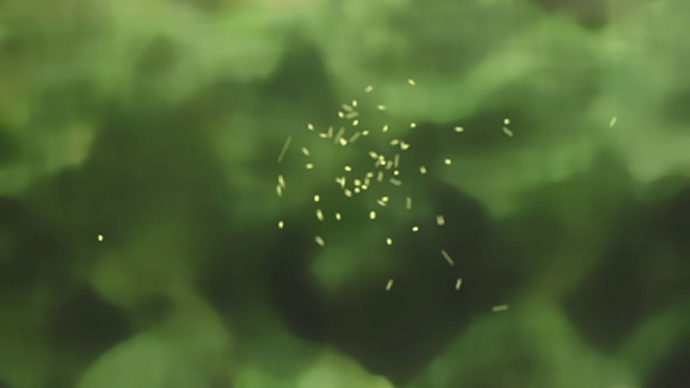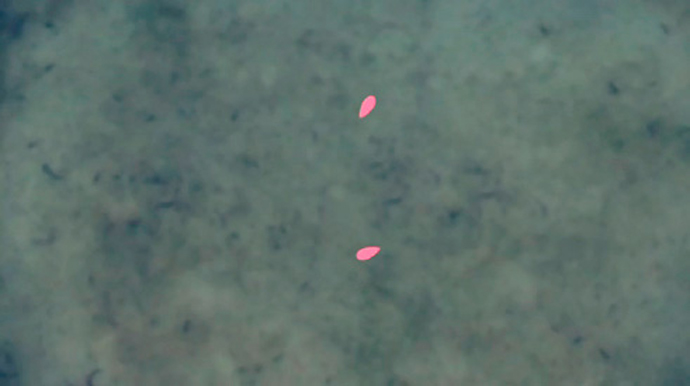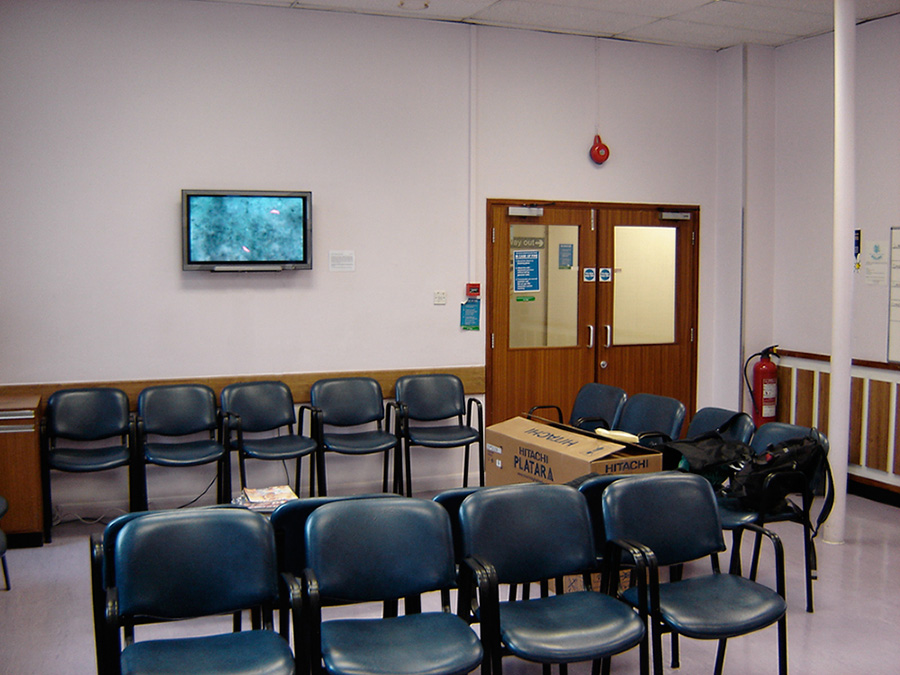An R&D project funded by the Wellcome Trust

Project Aims
The Aims of this project were to make animations that would alleviate stress levels in patients waiting to see doctors or to have treatment. This was achieved in 25% of patient viewers.
Project description
A series of 6 three minute, 20 second animations derived from movements of groups of insects, abstracted and simplified against non-representational backgrounds derived from natural environments, placed within healthcare waiting areas to alleviate stress. The animations were made specifically for waiting areas of hospitals; and were made with source material and help from the zoology department of the Natural history museum, and developed with collaborative input from Maggie Chapman a clinical hypnotherapist, and with Dr Cordelia Feuchtwang acting as a consultant during their development. Once completed, the animations played in a forced random order, to prevent anticipation and expectation in the viewer. The project was evaluated via interview and questionnaire at each location.
They were sited in three locations:
Clinic G (phlebotomy) in Outpatients, St Mary’s NHS, London playing during clinic hours for two weeks.
Women’s Outpatients Barts NHS, London, playing during clinics for two weeks
Yatton NHS Family Practice, Yatton Somerset, playing continuously for three weeks.
The staging in each location had to differ due to the constraints of working within a busy hospital or healthcare setting.



Project Audience
Yatton approx 2250 patients (over 3 week period including busy half-term week)
Barts 600 (over 2 weeks)
St Marys 2100 (250 patients attending outpatient appointments per week and 800 patients for blood tests)
Total number of people (excluding staff) who saw project 4950
Background and interests of team members in addition to artist Suky Best.
Maggie Chapman is a lecturer and clinical hypnotherapist. She has worked closely with the British Medical Association and The London Heart Hospital to develop the use of hypnotherapy within conventional medical practice, and is also is a senior lecturer at the London College of Clinical Hypnosis. She helped develop the animations to engage with certain parts of the brain that would help alleviate stress in the viewer. She has had an interest in this for many years. She also developed the evaluation process, designing the questionnaires, collating and analysing their data and setting guidelines for any interviews during evaluation. She is also director of City Minds and is currently running a longditudinal research study in the education sector on the effects of relaxation.
Mandy Holloway of the Zoology Department at the Natural History Museum identified suitable insects, fish and organisms that would make an appropriate starting point for animations of group behaviour. She also explained their behaviour, which informed the conceptual base for abstraction. Mandy Holloway was able to draw on the knowledge and expertise of colleagues in the museum suggesting and arranging fro algae other microbes to be filmed.
Dr Cordelia Feuchtwang a General Practitioner based in North Somerset acted as a consultant during the development stage of the project seeing the work every month or so for an informal discussion. With a broad range of interests she was willing to facilitate the installation of the finished work in her practice.
Overview
Suky Best writes:
This was a very successful project for me. I got to work with and develop a way of working with moving images that I hadn’t experienced before, expanding my skills and practice. I also worked with a variety of people from different disciplines, never having worked collaboratively before I found the experience interesting, enriching and on that I want to develop further and in corporate more within my practice as an artist. I also learnt a lot about insect behaviour. This has had a beneficial effect on my practice, whilst researching the insect movements I met with many etymologists and ecologists who gave me time and showed me wasps nests etc. I had a lot of help from the wildfowl and Wetlands trust, at Barnes and at Slimbridge, and from the team at Camley Street Nature Park, London. I am currently working on a series of animations and prints about the depletion of species and dwindling biodiversity in the Fens which will be exhibited at BCA Gallery Bedford April 2005 and the Pumphouse gallery October 2005, with possibilities of other venues.
This project originally came out of my own experience in hospital waiting areas and a personal desire to put something back into a context that had benefited me. I had never put work into a non-gallery setting before or had non-art audiences experience my work.
I am also working on a production grant proposal to the Wellcome Trust, as I want to take this project further. I think that the project needs much more collaboration with the nurses during its development and so I am proposing to make a permanent piece (by permanent I mean for 1-2 years, this is constrained by the limits of the life of the screen used) for the women’s outpatient waiting areas in at Barts hospital which has seasonal changes and incorporates sound. Made specifically with collaboration from the women’s outpatients’ nurses using data gathered initially from them and the patients of that area.
Maggie Chapman writes:
The study consisted of a random sample of 219 individuals over three locations. St Mary’s was a very crowded busy blood clinic, the screen was badly positioned and not able to be seen easily; there was an overall perceived relaxing effect of 20%. St Barts was a larger clinic, less busy than St Mary’s the screen was well positioned there was no increase however in perceived relaxation which remained at 20%. In Yatton a NHS GP’s surgery in Somerset where the DVD was presented on a TV as opposed to a plasma screen as at the other two locations, 51% stated that they experienced an overall relaxing effect.
The favourite screen in all locations was the butterfly screen; the most preferred colour was green in all locations. Suggestions from the feedback were that sound would be helpful and more natural representations would be more relaxing, however many found the screens interesting and were curious as to what they actually were and more generally people felt that the screens were favourable to nothing, though several mentioned the return of the fish tank would be welcome!